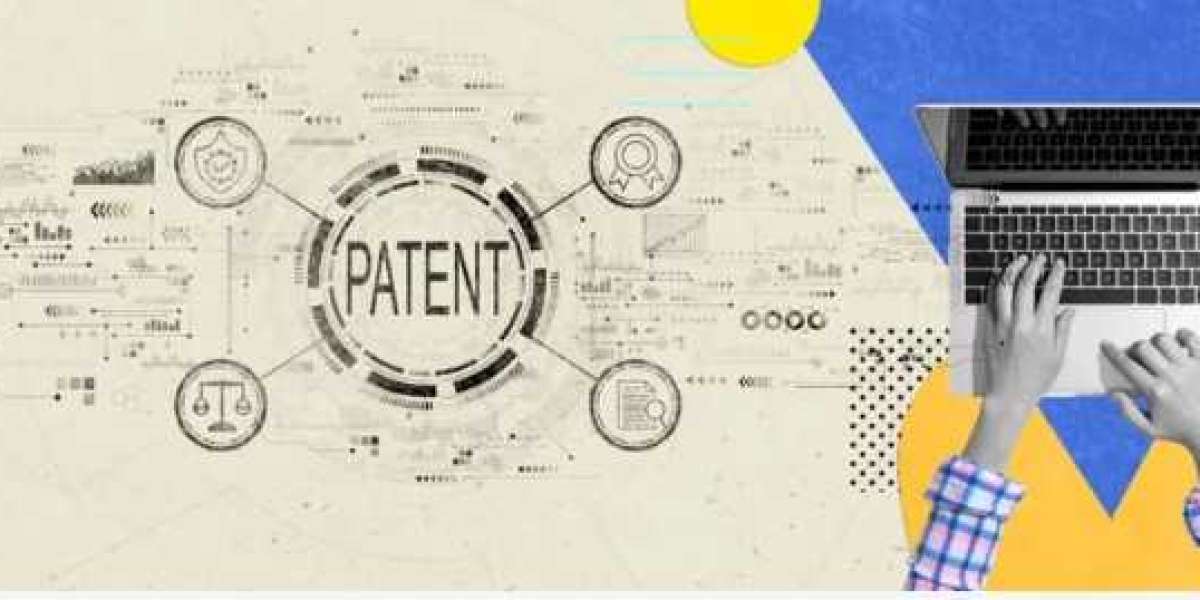In today’s fast-paced world, technological advancements have permeated every aspect of our lives. The realm of intellectual property is no exception, and one area where technology has made a significant impact is in the creation of patent drawings. As inventors and businesses seek to protect their innovations through patents, the role of technology in modern patent drawing creation has become increasingly prominent. In this article, we’ll explore how technology has transformed the landscape of patent drawing services, with a particular focus on professional patent drawing services.
The Evolution of Patent Drawings
Patent drawings are a fundamental component of the patent application process, serving to visually represent an invention’s key features and functionalities. Over the years, the creation of patent drawings has undergone a remarkable evolution, shaped by advances in technology, changes in regulations, and shifts in artistic styles.
Early Days: Hand-Crafted Artistry
In the early days of patenting, which can be traced back to the 18th century, patent drawings were exclusively hand-crafted. Inventors and their illustrators meticulously created drawings that showcased the intricacies of their inventions. These drawings were often elaborate, providing a detailed visual representation of the invention’s inner workings.
These early patent drawings were works of art in their own right, requiring both technical precision and artistic flair. They were typically executed in ink, watercolor, or other traditional mediums, and they had to adhere to specific standards set by patent offices to ensure clarity and consistency.
The Industrial Revolution: Rise of Technical Precision
As the Industrial Revolution unfolded in the 19th century, patenting and the demand for patent drawings grew exponentially. This period saw the emergence of engineering as a distinct profession, and with it came a shift towards more technical and precise patent drawings.
Advancements in printing technology also played a role in this evolution. Innovations like lithography allowed for the mass production of patent documents, and consequently, patent drawings needed to be reproducible with greater accuracy. This led to the development of drafting tools and stencils, further enhancing the technical aspects of patent drawings.
20th Century: The Advent of CAD
The 20th century brought about significant changes in the field of patent drawings with the advent of Computer-Aided Design (CAD) technology. CAD software revolutionized the way patent drawings were created, making the process faster, more accurate, and less reliant on traditional manual techniques.
CAD allowed patent illustrators to create precise, standardized drawings with ease. This marked a significant departure from the labor-intensive process of hand-drawing patent illustrations.
The Digital Age: Automation and Accessibility
In the 21st century, patent drawing creation has continued to evolve in the digital age. Specialized patent drawing software has emerged, offering automation features that can generate drawings based on textual descriptions.
Moreover, the accessibility of patent drawing tools has increased. Inventors and patent professionals can now access drawing software online, allowing for collaboration and real-time revisions regardless of geographic location. This has democratized the patent drawing process, making it more accessible to inventors and small businesses.
The Future: Integration of AI and 3D Modeling
Looking ahead, the future of patent drawings is likely to be shaped by the integration of artificial intelligence (AI) and 3D modeling technology. AI-powered tools can automate the creation of even more complex drawings, while 3D modeling can provide a comprehensive view of three-dimensional inventions.
These innovations will further streamline the patent application process, making it more efficient and cost-effective for inventors. Additionally, they will enable patent drawings to provide an even more accurate representation of inventions, particularly in industries where intricate designs and complex structures are commonplace.
Automation and Efficiency
In the realm of patent drawing services, the buzzwords of the day are “automation” and “efficiency.” The integration of technology and automation tools has ushered in a new era for patent drawings, offering inventors and businesses faster, more accurate, and cost-effective solutions. In this article, we will explore how automation and efficiency have transformed the landscape of patent drawing services and the benefits they bring to the world of intellectual property protection.
The Traditional Challenges
Traditionally, creating patent drawings was a labor-intensive process. Skilled illustrators meticulously crafted each drawing by hand, relying on their artistic talent and technical prowess to accurately represent an invention.
Moreover, the traditional process often required inventors or businesses to engage in lengthy back-and-forth communication with illustrators, leading to prolonged patent application timelines and increased costs.
The Rise of Automation
The advent of automation tools and specialized software has brought a paradigm shift to patent drawing services. Here’s how automation has revolutionized the field:
- Speed: Automation dramatically reduces the time required to create patent drawings. Specialized software can generate drawings based on textual descriptions and specifications, eliminating the need for illustrators to start from scratch.
- Accuracy: Automation minimizes the risk of errors and inconsistencies in patent drawings. Software algorithms ensure that drawings adhere to patent office standards and guidelines, reducing the chances of rejection due to technical flaws.
- Cost-Effectiveness: Automated processes are often more cost-effective. Inventors and businesses can save on illustrator fees and reduce the overall cost of patent application preparation.
- Standardization: Automation enforces standardization in patent drawings, ensuring that they consistently meet the requirements of different patent offices around the world.
- Ease of Revisions: Automated drawings are easily editable, allowing for quick revisions and updates as needed. This flexibility streamlines the patent application process.
Professional Patent Drawing Services and Automation
Many professional patent drawing services have embraced automation to provide their clients with efficient and high-quality drawings. Here’s how these services leverage automation:
- Efficiency: Professionals can now produce patent drawings more efficiently, allowing them to handle a higher volume of clients and reduce turnaround times.
- Quality Control: Automation tools include quality control mechanisms that detect errors and ensure compliance with patent office standards. This reduces the risk of rejections due to drawing-related issues.
- Collaboration: Automation tools often come with collaboration features, allowing clients to actively participate in the drawing creation process. This fosters better communication and ensures that the drawings accurately represent the inventions.
- Cost Savings: By automating certain aspects of the drawing process, professional services can offer competitive pricing to clients, making patent protection more accessible.
The Future of Automation in Patent Drawing Services
As technology continues to advance, the future of patent drawing services looks promising. Artificial intelligence (AI) is making its way into the field, offering even more sophisticated automation capabilities. AI-driven tools can generate highly complex drawings, particularly in industries where intricate designs are common.
Moreover, the integration of 3D modeling technology promises to provide a comprehensive view of three-dimensional inventions, further enhancing the accuracy and depth of patent drawings.
Collaboration and Accessibility
In the ever-evolving landscape of patent drawing services, two key factors have become instrumental in transforming the way inventors and businesses protect their intellectual property: collaboration and accessibility. With advancements in technology and communication tools, collaboration between inventors, patent illustrators, and professionals has never been easier. Moreover, enhanced accessibility has democratized the process, allowing a wider range of individuals and organizations to benefit from patent drawing services.
Collaboration: Bridging the Gap
Traditionally, the creation of patent drawings involved a rather linear process. Inventors would communicate their ideas to patent illustrators, who would then work independently to create the drawings. This method often led to misunderstandings, revisions, and potential delays in the patent application process.
With the advent of technology, collaboration in patent drawing services has taken a significant leap forward:
- Real-time Communication: Online collaboration platforms, video conferencing, and instant messaging apps have made it possible for inventors and patent illustrators to engage in real-time discussions, regardless of geographical location. This fosters better understanding and communication throughout the drawing creation process.
- Interactive Tools: Many patent drawing software platforms now offer interactive tools that allow inventors to actively participate in the drawing creation process. This includes features like markup tools and live editing, enabling inventors to provide immediate feedback and revisions.
- Streamlined Feedback Loop: Collaboration tools facilitate a more streamlined feedback loop. Inventors can highlight specific changes or clarifications, reducing the need for extensive back-and-forth communication and ensuring that the drawings accurately represent their inventions.
- Transparency: Collaboration tools enhance transparency in the drawing creation process. Inventors can track the progress of their drawings, view revisions in real time, and have a clear understanding of the project’s status.
Accessibility: Democratizing Patent Drawing Services
Accessibility in patent drawing services refers to making these services available and affordable to a broader audience. Here’s how enhanced accessibility is reshaping the landscape:
- Online Platforms: The availability of patent drawing software and professional services on online platforms has eliminated the need for physical presence. Inventors and businesses can access these services from anywhere in the world, breaking down geographical barriers.
- Affordability: As competition in the market increases, many patent drawing services have become more cost-competitive. This makes patent protection more accessible to inventors, startups, and small businesses with limited budgets.
- Diverse Clientele: Improved accessibility has diversified the clientele of patent drawing services. It’s no longer solely the domain of large corporations. Individual inventors, startups, universities, and research institutions can all benefit from these services.
- Self-Service Options: Some patent drawing software platforms offer self-service options, allowing inventors to create their drawings using user-friendly interfaces. This approach is particularly attractive to those with a DIY spirit and a tighter budget.
Collaboration and Accessibility in Practice
The combination of collaboration and accessibility in modern patent drawing services means that inventors and businesses can actively engage in the process, whether they choose to work with professional patent illustrators or use software on their own. It puts more control in the hands of the inventors and streamlines the patent application process.
Moreover, these advancements have significant implications for patent offices, as clearer and more accurate drawings reduce the likelihood of rejections, ultimately speeding up the patent approval process.
Quality Assurance
In the realm of patent drawing services, quality assurance is paramount. The accuracy and precision of patent drawings can significantly impact the outcome of a patent application, making it imperative to maintain the highest standards throughout the drawing creation process.
The Importance of Quality Assurance
- Adherence to Patent Office Standards: Patent offices worldwide have strict standards and guidelines for patent drawings. Ensuring that drawings comply with these standards is essential to prevent rejections or delays in the patent application process.
- Minimizing Errors: Errors or inaccuracies in patent drawings can lead to misunderstandings about the invention’s features or functionality. This can jeopardize the patent’s validity and the protection it offers.
- Legal and Professional Credibility: High-quality drawings enhance the overall credibility of the patent application. They demonstrate professionalism and attention to detail, which can positively influence patent examiners’ assessments.
- Reducing Rejection Rates: Patent applications with clear and accurate drawings are less likely to be rejected or face objections based on drawing-related issues. This can significantly expedite the patent approval process.
Challenges in Ensuring Quality Assurance
- Human Error: Even the most skilled patent illustrators may make occasional errors, such as inaccuracies in dimensions, misrepresentations of features, or non-compliance with patent office guidelines.
- Consistency: Maintaining consistency in style, formatting, and technical details across multiple drawings within a patent application can be challenging.
- Complexity of Inventions: Some inventions, particularly in fields like engineering and biotechnology, are highly complex and require intricate drawings. Ensuring accuracy in such cases can be daunting.
- Evolving Regulations: Patent office guidelines and regulations may change over time, requiring patent drawing professionals to stay up-to-date and adapt to new requirements.
Strategies for Ensuring Quality Assurance
To overcome these challenges and ensure quality assurance in patent drawing services, several strategies are employed:
- Skilled Illustrators: Hiring skilled and experienced patent illustrators is the first step in ensuring quality. These professionals are well-versed in patent office standards and have the technical expertise to create accurate drawings.
- Use of Specialized Software: Specialized patent drawing software often includes built-in quality control mechanisms. These tools can detect errors and ensure that drawings comply with patent office standards.
- Review and Verification: Conducting rigorous reviews and verifications of drawings is crucial. Multiple rounds of reviews by different professionals can help catch errors and inconsistencies.
- Client Feedback: Encouraging inventors and clients to provide feedback and clarifications throughout the drawing creation process helps ensure that the drawings accurately represent the invention.
- Continuous Training: Keeping patent illustrators updated with the latest regulations and standards through continuous training and professional development is essential.
- Standardization: Establishing standardized templates and procedures for creating patent drawings can help maintain consistency across drawings within a single patent application.
- Automation: Some aspects of quality assurance can be automated using specialized software, which can check for compliance with patent office standards and flag potential issues.
The Future of Patent Drawing Creation
As technology continues to advance at an unprecedented pace, patent drawing creation is poised for a transformative future. This article explores the exciting developments and trends that are shaping the future of patent drawing creation, making it more efficient, accurate, and accessible than ever before.
- Integration of Artificial Intelligence (AI)
Artificial intelligence is revolutionizing many industries, and patent drawing creation is no exception. AI-powered tools and algorithms are increasingly being employed to automate various aspects of the drawing process. Here’s how AI is influencing patent drawings:
- Automated Drawing Generation: AI can generate patent drawings based on textual descriptions and specifications. This capability speeds up the drawing creation process and ensures consistency and accuracy.
- Error Detection: AI algorithms can detect errors and inconsistencies in drawings, reducing the risk of rejections due to technical flaws.
- Enhanced 3D Modeling: AI-driven 3D modeling tools enable the creation of highly detailed and complex drawings, especially in fields like engineering and biotechnology.
- Language Translation: AI-powered language translation tools facilitate collaboration between inventors, patent illustrators, and professionals worldwide, ensuring that language barriers do not impede the creation of accurate drawings.
- 3D Printing and Prototyping
The integration of 3D printing technology is becoming increasingly prevalent in patent drawing creation, especially in industries where intricate designs and complex structures are commonplace. This technology allows inventors to create physical prototypes based on their patent drawings, offering a comprehensive and tangible representation of their inventions. This can be particularly valuable in fields such as aerospace, automotive engineering, and medical devices.
- Enhanced Collaboration Tools
The future of patent drawing creation will see further advancements in collaboration tools. These tools will enable inventors, patent illustrators, and professionals to work together seamlessly, regardless of their geographical locations. Real-time collaboration, virtual reality (VR), and augmented reality (AR) platforms may become integral parts of the drawing creation process, enhancing communication and visualization.
- Blockchain for Intellectual Property Protection
Blockchain technology is gaining traction in intellectual property protection. In the future, blockchain can be used to timestamp and secure patent drawings, providing a tamper-proof record of their creation. This can help establish a clear chain of ownership and protect the intellectual property rights of inventors.
- Accessibility for All
Enhanced accessibility will continue to be a driving force in the future of patent drawing creation. Online platforms and self-service patent drawing software will become more user-friendly and accessible, allowing a wider range of inventors, startups, and small businesses to create their patent drawings. This democratization of the process will empower more individuals and organizations to protect their intellectual property.
- Environmental Considerations
In the future, there may be a growing emphasis on sustainable and eco-friendly patent drawing practices. This could include the use of environmentally responsible materials for physical drawings, as well as the development of software tools that optimize drawings for digital use, reducing paper waste.
Conclusion
In conclusion, the world of patent drawing creation is experiencing a remarkable transformation driven by technology, innovation, and the ever-growing demand for intellectual property protection. Here are the key takeaways:
Environmental Considerations: Sustainability will become an important consideration, with eco-friendly practices in both physical and digital patent drawings, reducing paper waste and environmental impact.
Read More
DIY vs. Professional Services: When to Use Software for Utility Patent Drawings
Unlocking the Power of Utility Design Patents: A Comprehensive Guide
The Role of Patent Draftsmanship in Intellectual Property Strategy








